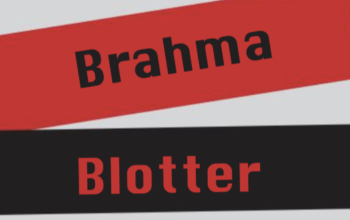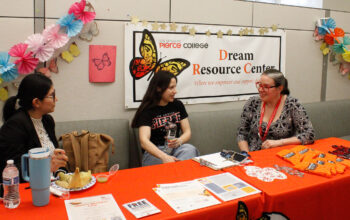Shweta Saraswat
“Who remembers the Armenians?”When Adolf Hitler asked his subordinates during World War II whether any of them recall the killings of more than 1 million Armenians in the early 1900s, there was no response.Today, Pierce College is taking a step in spreading awareness of the Armenian Genocide through the medium of art, with the opening of the “Power of the Poster” exhibition in April – the month of commemoration of the genocide.”I think not a lot of people know about it because I get a lot of blank stares in classrooms when I talk about it,” said professor Ramela Abbamontian, who is the gallery coordinator and curator of the show.After taking the show to UCLA and Woodbury University, Abbamontian has brought the collection of 13 protest posters to the Pierce Art Gallery not only to promote general awareness of the genocide, but to serve as something tangible students can apply directly to their coursework.”We want the gallery to do several things, one of which is to be able to work with campus community, to kind of go into the curriculum of classes like political science, history and art design,” said Abbamontian. “We want the art to be accessible to (students) so they can see what they’re learning in an original work. We’re trying to bridge the gap between the gallery and the curriculum.”The exhibition will include replicas of posters created during the actual time of the genocide, which is accepted to have begun in 1915, as well as works from contemporary artists who Abbamontian said “want acceptance and recognition for a part of history that has often been covered up or revised.”Among the artists featured will be Sophia Gasparian, 35, who came to America from Armenia as a political refugee in 1988. She feels the constant creation of protest art such as hers will help “confront” the tragedy.”To me, (the exhibition) is meant to address the issue,” said Gasparian, “and to show the audience that political points of view can be expressed not only through speech but also through art.”The exhibition will run from April 1 to 24 in the Pierce Art Gallery, which is open Tuesday to Thursday from 2 to 7 p.m. An opening reception will take place on April 2 from 7 to 9 p.m.Before the reception at 5:30 p.m., Carol A. Wells, director of the Center for the Study of Political Graphics (CSPG) in Los Angeles, will give a slide lecture titled, “Can Design Stop a War?” in Art 3300.Wells founded the CSPG almost 20 years ago, with a collection including art from the early 1900s to the present. The center holds the largest number of post-World War II protest posters in the U.S. – 60,000.”My lecture is about the power of art, and whether art can make a difference politically – and I think it can,” said Wells, who has been collecting posters and curating exhibits since 1981. “Historically, public awareness has changed people’s minds and gotten people involved.”Regarding the “Power of the Poster” exhibition, Wells agrees that “the Armenian Genocide is very little known outside of the Armenian community.”Business major Robert Tonoyan, 20, has heard stories of the genocide from his parents, who immigrated to the U.S. from Armenia decades ago. He hopes that the exhibition will offer a fresh perspective on the issue.”It will be interesting to see what was happening at the time through the vintage posters,” he said, “and why it is being brought up today, almost a hundred years later.”



